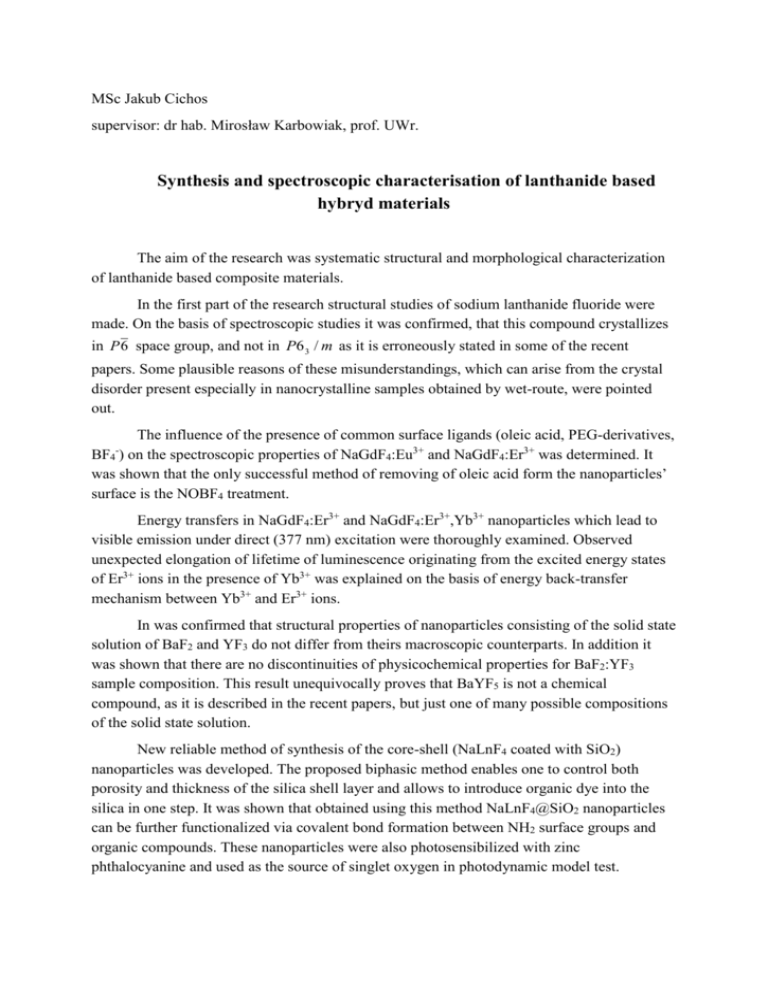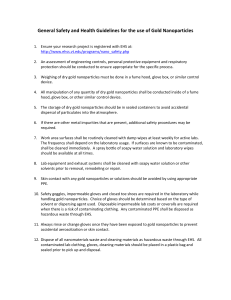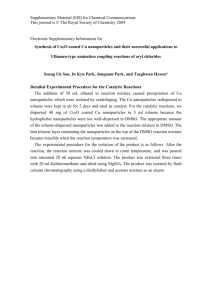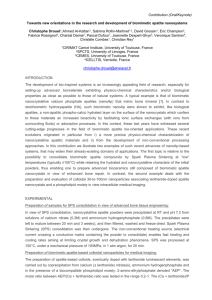The aim of the research was systematic structural and morphological
advertisement

MSc Jakub Cichos supervisor: dr hab. Mirosław Karbowiak, prof. UWr. Synthesis and spectroscopic characterisation of lanthanide based hybryd materials The aim of the research was systematic structural and morphological characterization of lanthanide based composite materials. In the first part of the research structural studies of sodium lanthanide fluoride were made. On the basis of spectroscopic studies it was confirmed, that this compound crystallizes in P 6 space group, and not in P6 3 / m as it is erroneously stated in some of the recent papers. Some plausible reasons of these misunderstandings, which can arise from the crystal disorder present especially in nanocrystalline samples obtained by wet-route, were pointed out. The influence of the presence of common surface ligands (oleic acid, PEG-derivatives, BF4 ) on the spectroscopic properties of NaGdF4:Eu3+ and NaGdF4:Er3+ was determined. It was shown that the only successful method of removing of oleic acid form the nanoparticles’ surface is the NOBF4 treatment. - Energy transfers in NaGdF4:Er3+ and NaGdF4:Er3+,Yb3+ nanoparticles which lead to visible emission under direct (377 nm) excitation were thoroughly examined. Observed unexpected elongation of lifetime of luminescence originating from the excited energy states of Er3+ ions in the presence of Yb3+ was explained on the basis of energy back-transfer mechanism between Yb3+ and Er3+ ions. In was confirmed that structural properties of nanoparticles consisting of the solid state solution of BaF2 and YF3 do not differ from theirs macroscopic counterparts. In addition it was shown that there are no discontinuities of physicochemical properties for BaF2:YF3 sample composition. This result unequivocally proves that BaYF5 is not a chemical compound, as it is described in the recent papers, but just one of many possible compositions of the solid state solution. New reliable method of synthesis of the core-shell (NaLnF4 coated with SiO2) nanoparticles was developed. The proposed biphasic method enables one to control both porosity and thickness of the silica shell layer and allows to introduce organic dye into the silica in one step. It was shown that obtained using this method NaLnF4@SiO2 nanoparticles can be further functionalized via covalent bond formation between NH2 surface groups and organic compounds. These nanoparticles were also photosensibilized with zinc phthalocyanine and used as the source of singlet oxygen in photodynamic model test. This method can be also applied for coating of other types of hydrophobic nanocrystals e.g. PbS quantum dots. Next type of investigated composite materials was silica coated europium (III) complexes. Prepared nanoparticles exhibit narrow size distribution in the nanometer sizerange and much longer emission decay times in comparison to pure Eu3+ complexes. The cytotoxicity of both materials was determined in cooperation with The Laboratory of Molecular Bioimmunology of Tumors from Ludwik Hirszfeld Institute of Immunology and Experimental Therapy PAS. The influence of surface ligands on nanoparticles’ cytotoxicity was determined and usability of nanoparticles as contrasts for fluorescence microscopy was confirmed (in cooperation with dr hab. Artur Bednarkiewicz form Lower Silesian Centre for Materials and Biomaterials). New hybrid composite material composed of homogeneously embedded NaLnF4 nanoparticles in poly(methyl mathacrylate) matrix was prepared. It was shown that stabilizer present in methyl mathacrylate has complexing properties and acts like antennae leading to efficient excitation energy transfer to lanthanide ions (Eu3+, Tb3+) embedded in NaGdF4 matrix.









